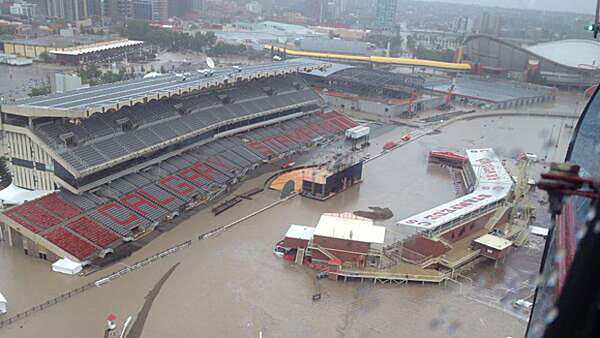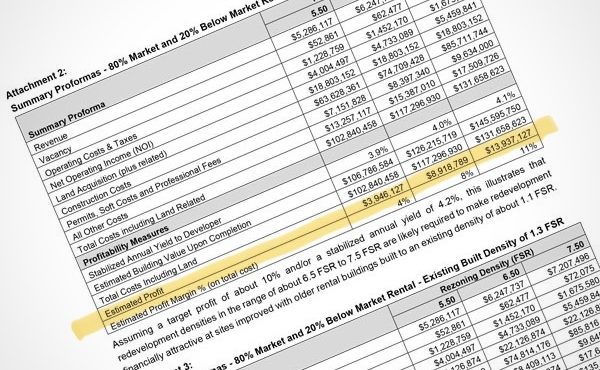
Would you be able to rely on your neighbors in the event an earthquake struck your home? How helpful would public institutions remain if a flood swept through your neighborhood?
The list of massive scale destructive incidents since the turn of the 21st century is significant and includes floods, pest infestations, hurricanes, earth quakes and more. In planning for disasters, governments and agencies tend to employ similar scale methods to help communities regain structure and routine.
Mary Rowe’s research into disaster stricken regions raised her concerns: rescue and restructuring efforts by the authorities started to look like systemic acts of demolition of whole neighborhoods. When residents of the destroyed places had noticed these acts, the intentions of authorities became suspect. Mary is Vice President and Managing Director of the Municipal Art Society of New York (MAS http://mas.org) and recently presented at UBC Robson Square. Her talk focused on issues of small scale activities within the urban realm: how individuals and neighborhoods are key forces to consider when planning for disasters. The talk was presented by Bing Thom Architects and the University of British Columbia’s School of Community and Regional Planning (SCARP).
MAS is a non-profit membership organization that has been working since 1893 to make New York a more livable city. In recent years, Mary Rowe has been involved in the restructuring efforts of disaster stricken communities and what follows are some of the main points of her interesting presentation:
– – – – – – – – – – – – – – – – – – – – – – – – – – – – – – – – – – –
One of the strongest messages from Mary’s talk was the need for awareness and action in all fronts of urban infrastructure. Residents of a city are also its owners.
In urban life and management, there are seamless ties between the built environment and the life it supports. The city is our most complex tool and we are its most important component. In many cases, we plan our solutions based on experiences from the past—experiences that rarely repeat themselves in a similar way.
“In a disaster, people of Vancouver will be at each other’s throats” (from the audience)
There’s a funny little phrase from an obscure little song that says, “People are Human Beings too”[1]. The conflicting streams of our own existence lie at the heart of this phrase. Yes, people definitely are capable of being at each other’s throats. In times of crisis, the intricate web of social structures displays its strengths as well as its weaknesses. In our planning for disasters we can only try to provide resources and erect barriers for what we’ve already recognized as human traits.
It is valuable to acknowledge our own capabilities of destruction when discussing the needs of the future. We are all used to asking ‘Why’ and other questions. Why would people be at each other’s throats? Who were they in documented incidents? What would have prevented them from unwanted behaviours? What would facilitate support and collaboration? Planning for disaster is not only learning from the past. It is also an opportunity to know something about ourselves today. We create a reality in the present for the benefit of the future.
“I think some of those places need to be removed” (another comment from the audience)
What Mary Rowe stressed in her talk was the conditions that had built up to become the disaster. If a neighborhood is destroyed, one has people to work with. In New Orleans, the collapse of infrastructure exposed the ongoing neglect in the various layers that support a society. There is a need for balance between our search for perfection and the reality of breakage and renewal. If your house is broken, you are mostly free to decide whether to leave it behind or fix it.
Mary Rowe also advocated for stronger reliance on local communities in determining their fate. A few arguments were raised in favour of seemingly contradictory policies: large scale systems were proposed as the better investment. In any society, a varied set of balances are always waiting to be explored. The process of debate results in the story we eventually live. This is why the question ‘What is your story?’ is a compelling one.
Whatever we label disaster, we always try to avoid – mostly by planning. We learn from the past and try to anticipate the future. We always wake up to the realization that disasters don’t happen by the book.
Can we really plan for disaster? The danger people face following a disaster is no longer bad infrastructure. Their danger is a return to the process that has dragged the already fractured infrastructure to its knees. By making sure that our habitat is built and maintained in response to its surrounding you achieve the first step for recovery. Providing access to resources in the event of restructuring is the next. If the first step is done right, the other might not turn into an overwhelming struggle.
The story of a place is made up of the intricate fragments of human life, their connections to it and each other. People have been resourceful throughout history. As the means of communication become more available and far reaching, our societies can become more connected and collaborative. Our circles-of-engagement is what makes us resilient.





2 comments
Everything good about the city came from a vision of those pioneers a century ago that has essentially provided the womb for a modern city. Everything prosaic and inept (luxury condos) is the work of those who plan as if there were no tomorrow, and hence we find ourselves temporarily out of step with the pace of building new cement monuments to ourselves. What remains, to my surprise, is that the fabric of many communities throughout the area, which are the keepers of the flame. There is a wisdom operating in these communities that may be difficult to discern at the moment, but in a time of distress they will be there with the core values of charity and human compassion. I am comforted by that.
As open discussions go, it’s a good idea to introduce some expansion points for reflection. The link here was sent to me by my sister: https://www.youtube.com/watch?v=q43uXdOKPD8